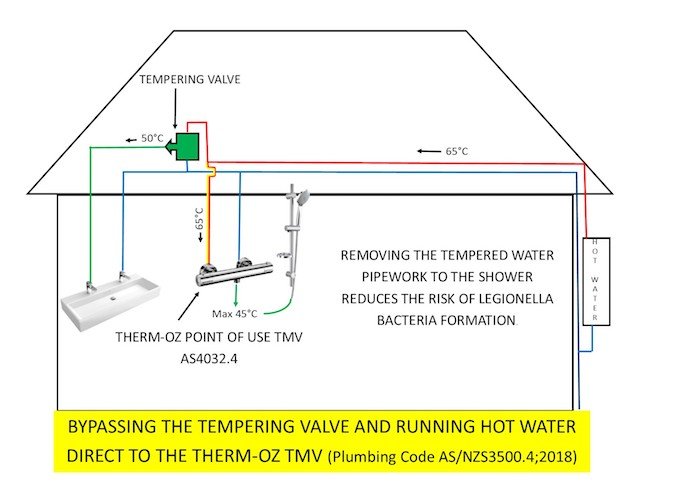It is the bacteria that can lead to Legionnaire’s Disease, an illness which affects the lungs and can be particularly dangerous for elderly people and those with weakened immune systems.
According to media reports, the study found that the bacteria occurred where hot water systems were set to lower temperatures and if showers were not used for extended periods.
The report called for stage hot water systems to be set to a minimum 65C and for showers that were used less frequently to be run at least at weekly intervals to prevent the build-up of stagnant water in pipes.
But according to Master Plumbers & Gasfitters Association CEO Murray Thomas, a lack of consistency in regulations between Australian States, as well as different specifications for various hot water system models, has left home owners confused and plumbers with their hands tied.
“The Plumbing Code of Australia calls for storage hot water systems to be set at a minimum 60C, while a lot of instantaneous systems might be hardwired to a maximum of 50C,” Mr Thomas said.
“Then there are standards that specify maximum outlet temperatures in facilities such as schools and aged-care homes, which are quite rightly enforced to prevent scalding. In cases where water can be delivered to outlets at temperatures of 65C or higher, there is a significant scalding risk to users.”
Mr Thomas said issues could occur depending on where the tempering valve was located. In many cases, even if the temperature at the hot water system could be set to 65C, water may still sit in the pipework after the tempering valve and that did not eliminate the risk of legionella proliferating.

Legionnaire’s Disease is most commonly contracted by inhaling steam or water vapour, hence enclosed shower recesses are regarded as a greater risk area.
Rob Pond, founder and director of Therm-Oz Showers, said a point-of-use thermostatic shower was a highly effective option, It was Mr Pond’s innovation and two years of persistence that saw thermostatic mixing valves being included in the Australian Watermark scope.
“It is equally important to remove the risk of legionella bacteria and to prevent scalding, and a thermostatic shower valve achieves both by bypassing a tempering valve and allowing hot and cold water to be tempered at the outlet,” he said.
“The hot water supplied to baths and wash basins should still pass via the tempering valve to ensure scalding does not occur but the risk of inhaling legionella bacteria is much less than in showers.”

Mr Pond said Therm-Oz thermostatic valves removed the risk of scaling as water was tempered at the outlet to a maximum temperature of 45C, while a safety function ensured it was defaulted to 38C. This complies with AS/NZ3500.4:2018, which specifies tempering requirements for special uses such as early childhood centres and aged care facilities.
Source: Master PlumbersMagazine, Issue 23 pp. 23
